2026 Hyundai Palisade Vs. 2026 Hyundai Santa Fe: 5 Major Differences originally appeared on Autoblog.
Hyundai now has two of the best three-row SUVs on the market
In the space of just a year or two, Hyundai has two fresh-faced, three-row, gas-powered crossovers on sale. The Santa Fe was completely revised as of the 2024 model year, and the 2026 Santa Fe recently debuted.
These SUVs have a large pricing overlap, so it can be tricky for Hyundai fans to decide which one is the better buy. To help you make that decision, we’ve outlined five major differences between the 2026 Palisade and 2026 Santa Fe.
Related: Every 2026 Hyundai Model Year Update You Need To Know
1. Palisade Has More Cylinders And Power

View the 4 images of this gallery on the original article
Both SUVs come with gas and hybrid powertrains, but the Palisade has more grunt in both configurations.
In the Santa Fe, a 2.5-liter four-cylinder turbocharged engine makes 277 horsepower and 311 lb-ft of torque, paired with a newly standard eight-speed automatic and front- or all-wheel drive. By comparison, the standard Palisade has a 3.5-liter V6 with 287 hp and 260 lb-ft of torque; it has the same drivetrain choices as the Santa Fe.
Moving on to the hybrids, the Santa Fe Hybrid’s 1.6-liter four-pot hybrid makes 231 hp and 271 lb-ft combined. The transmission is a six-speed automatic, and it also has FWD or AWD. The hybrid equivalent of the Palisade uses a 2.5-liter four-pot instead, and it makes 329 hp and 339 lb-ft combined, easily more than the Santa Fe Hybrid. FWD is standard and AWD optional.
While the gap between the gas-only models is smaller, many may prefer the smoothness of the Palisade’s V6.
Related: 2025 Hyundai Santa Fe: 5 reasons to love it, 2 reasons to think twice
2. Santa Fe Wins For Efficiency
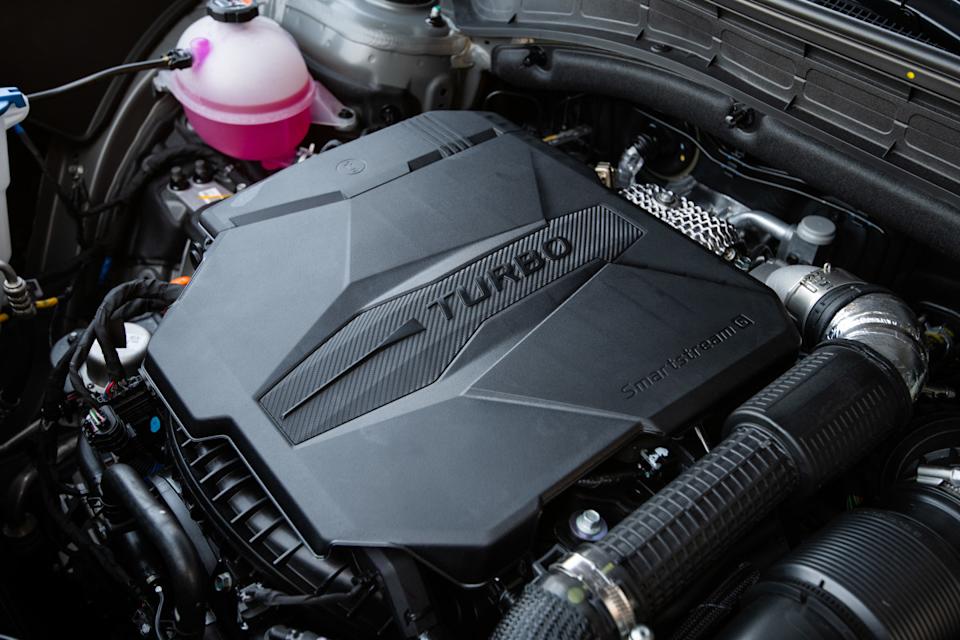
View the 2 images of this gallery on the original article
There’s no contest here. The base Santa Fe returns 20/29/24 mpg city/highway/combined with FWD, or 20/28/23 mpg with AWD. The much larger V6 in the Palisade gets 19/25/21 mpg with FWD or 18/24/20 mpg with AWD. On paper, then, the Santa Fe’s standard engine looks like the winner, as it’s not far behind on power, has more torque, and is much more efficient.
The Santa Fe Hybrid manages up to 37/36/36 mpg with FWD and 35/34/34 mpg with AWD. Hyundai has only said that the Palisade Hybrid is expected to get over 30 mpg and has a range of up to 619 miles. In the Santa Fe Hybrid, you can cover up to 637 miles on a full tank.
3. Palisade Can Seat An Extra Person And Has A Bigger Third Row
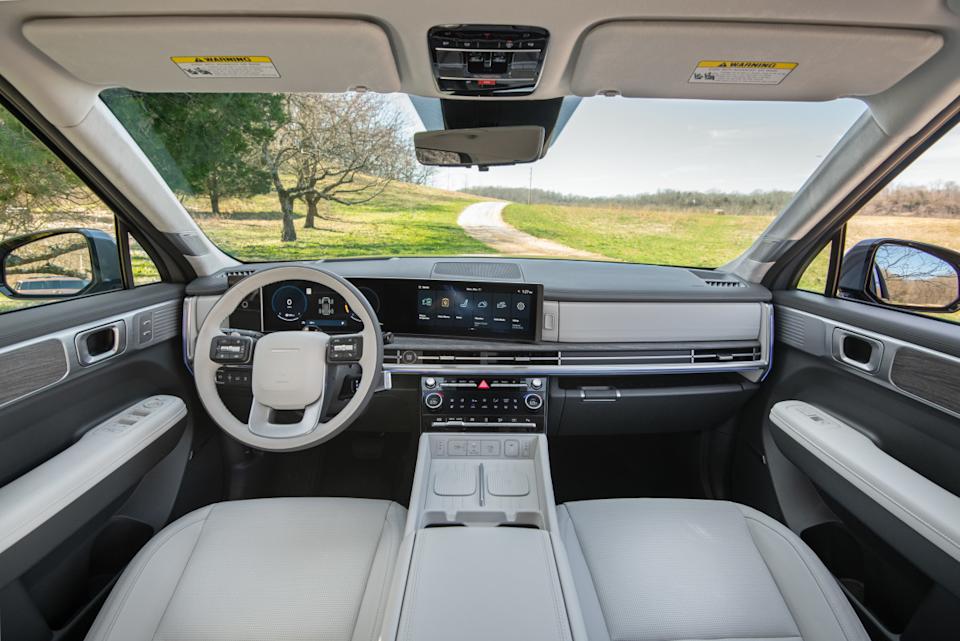
View the 4 images of this gallery on the original article
Both these SUVs have slick, airy interiors. Materials are of a high quality and there’s no shortage of screen real estate and tech to keep the whole family connected. The larger Palisade has an advantage in terms of accommodating passengers, though.
Depending on the trim, the Santa Fe can only seat seven or six occupants. All Palisades can seat at least seven occupants, and if you go for the base SE or the Hybrid SEL Premium, it’s possible to seat up to eight people.
While both vehicles have generous space in the first two rows, the Santa Fe is more cramped in its third row, where it has 37.7 inches of headroom and 30 inches of legroom. In the Palisade’s third row, you’ll find 37.8 inches of headroom and 32.1 inches of legroom, so this is the better choice if you ever need to put older teens or adults in the back row.
4. Trim For Trim, Santa Fe Is Cheaper
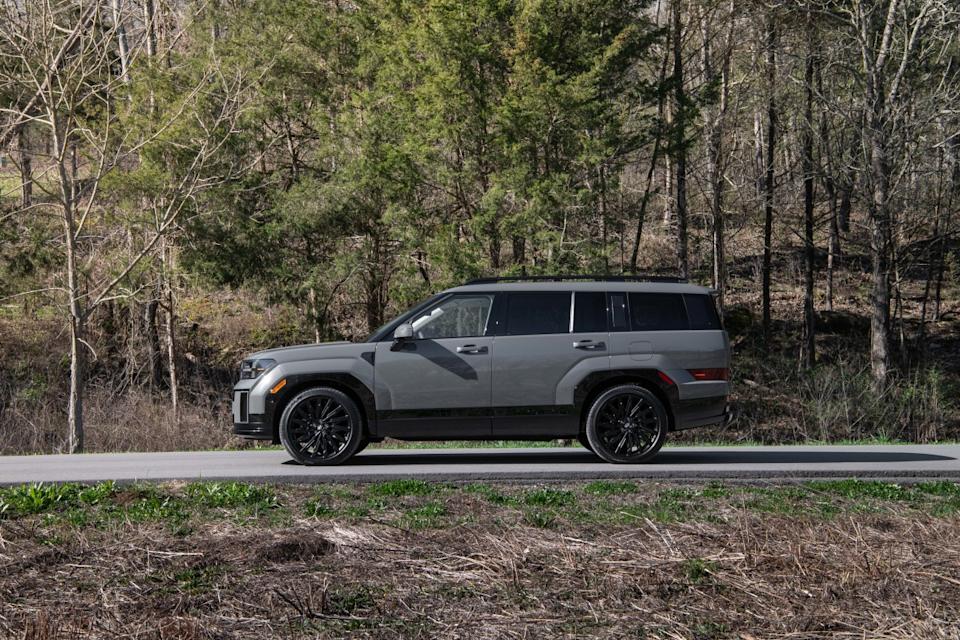
View the 2 images of this gallery on the original article
The Santa Fe lineup begins at $34,800 for the SE with FWD and goes all the way up to $50,250 for the Santa Fe Calligraphy Hybrid with AWD. For the base Palisade, expect to pay $38,935 for the SE with FWD and as much as $58,280 for the Hybrid Calligraphy.
There are some big gaps in pricing between comparable trims. For instance, the Santa Fe Calligraphy costs $47,350, but the Palisade Calligraphy goes for $54,060, which is $6,710 more. Both these trims have classy Nappa leather, the highway driving assist system, and a camera-based rearview mirror. You do get more luxurious accommodations in the Palisade, though, such as third-row heated seats and even power-adjustable second-row seats.
If you don’t need a bigger third row with all the extras, you can save a lot by going for the Santa Fe.
5. Palisade Can Tow More
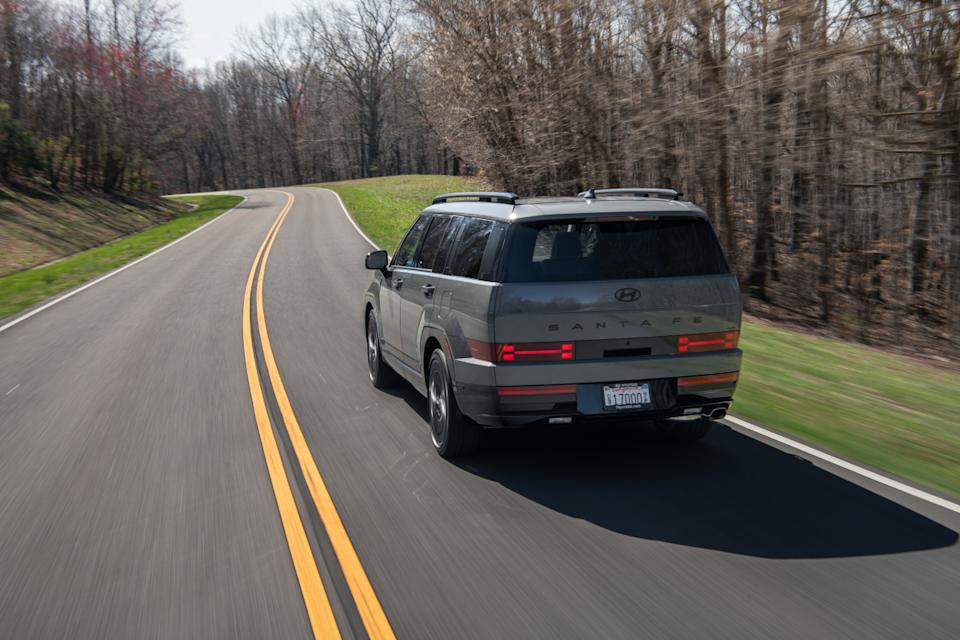
View the 2 images of this gallery on the original article
If their spacious cargo areas aren’t enough, you may want to consider how much these crossovers can tow. The Santa Fe can manage 4,500 pounds in XRT guise or up to 2,000 lbs with the hybrid. The Palisade can handle up to 5,000 lbs, or as much as 4,000 lbs for the hybrid.
All Santa Fe and Palisade models come with standard trailer sway control.
Final Thoughts
If you absolutely need a V6, more power, or a lot of third-row space, go for the Palisade. But if you want an efficient, high-value three-row SUV, the Santa Fe is better.
Between these two extremes, choosing between the Santa Fe and Palisade becomes more complicated, and could come down to comparing specification sheets and individual trim prices. The new Santa Fe is a vast improvement over the outgoing model, so has moved closer in overall capability to the more premium Palisade.
Either way, you can’t go wrong. These are two highly competitive products that reside at or near the top of the class.
Related: 2026 Toyota RAV4 Vs. 2026 Honda CR-V: 5 Major Differences
2026 Hyundai Palisade Vs. 2026 Hyundai Santa Fe: 5 Major Differences first appeared on Autoblog on Aug 2, 2025
This story was originally reported by Autoblog on Aug 2, 2025, where it first appeared.

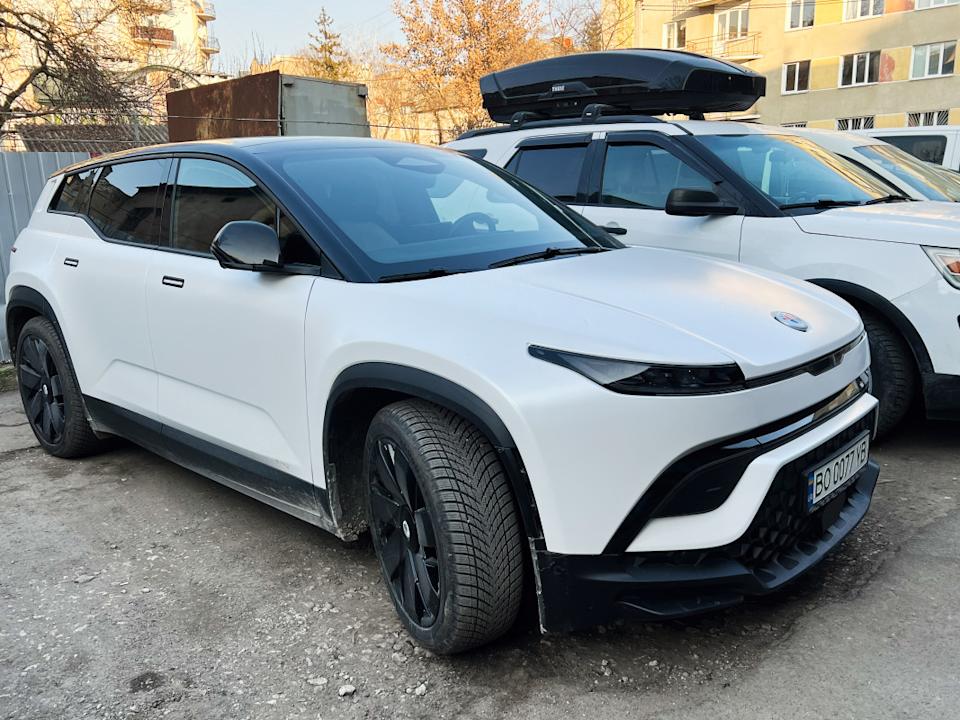
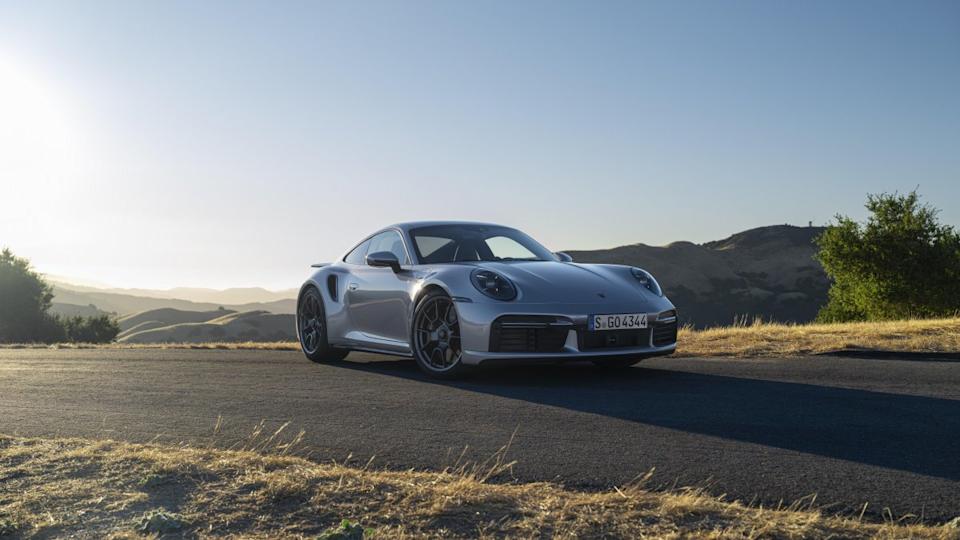
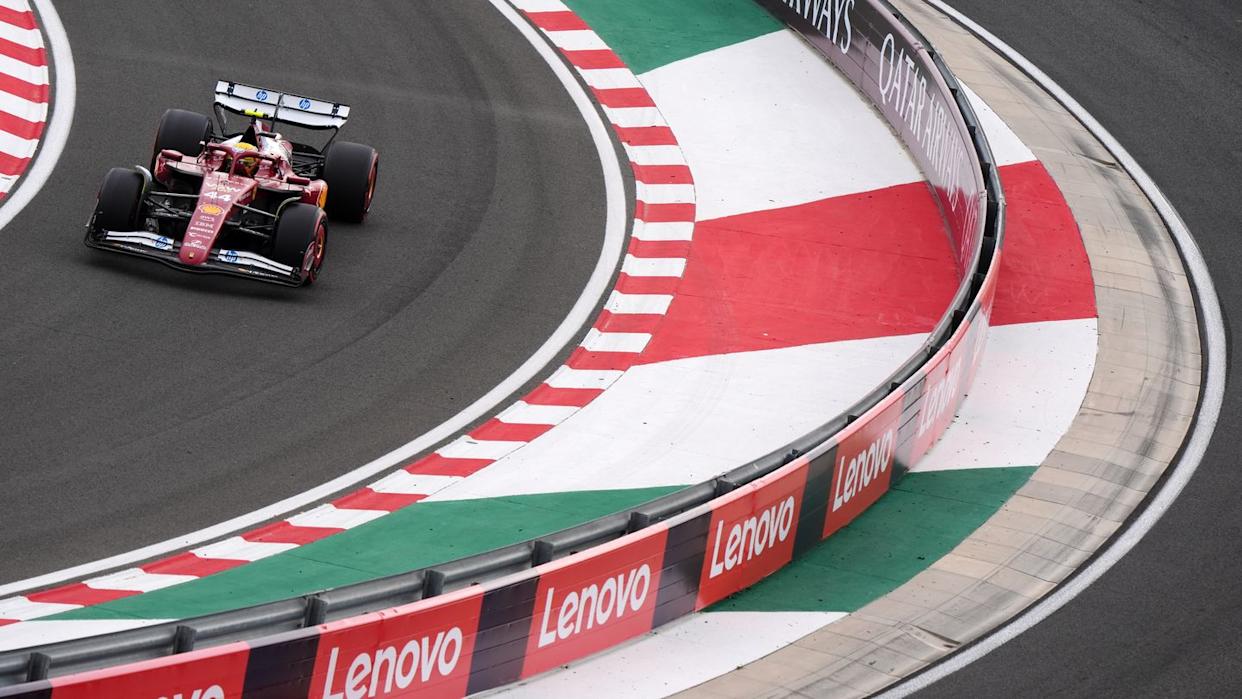
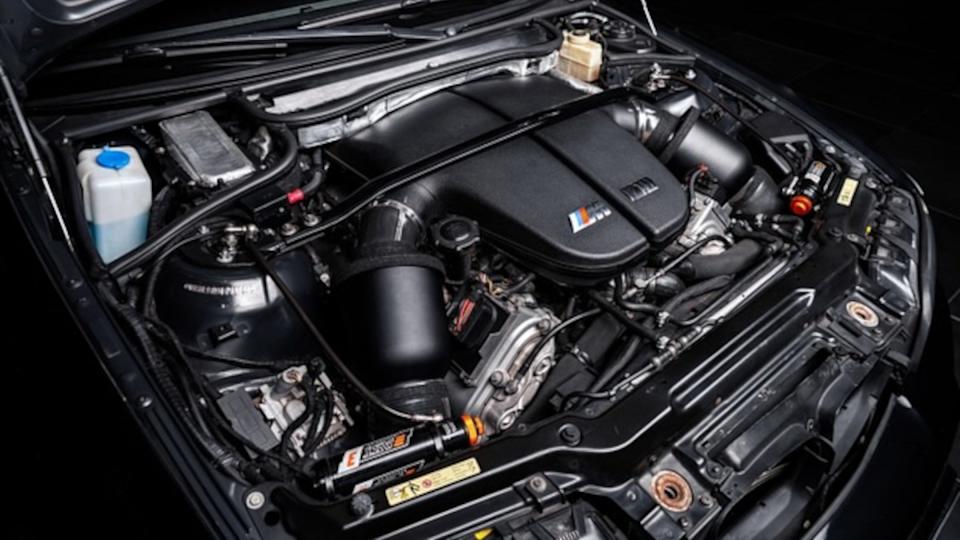
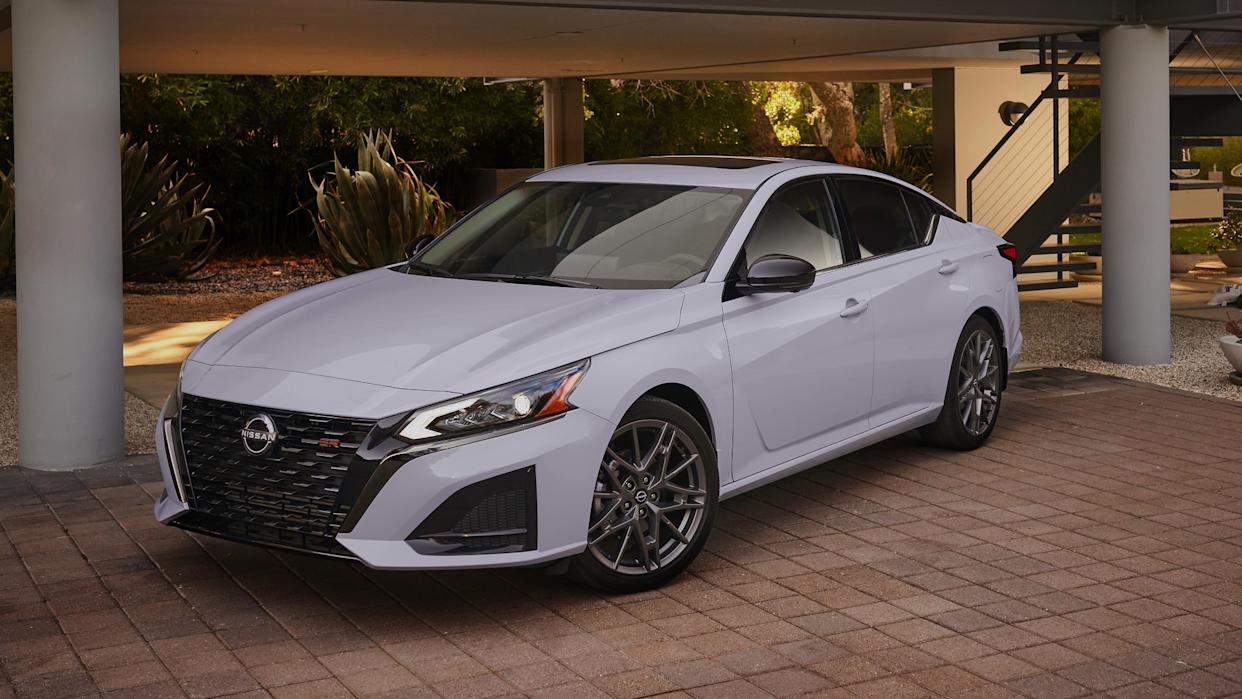
评论留言